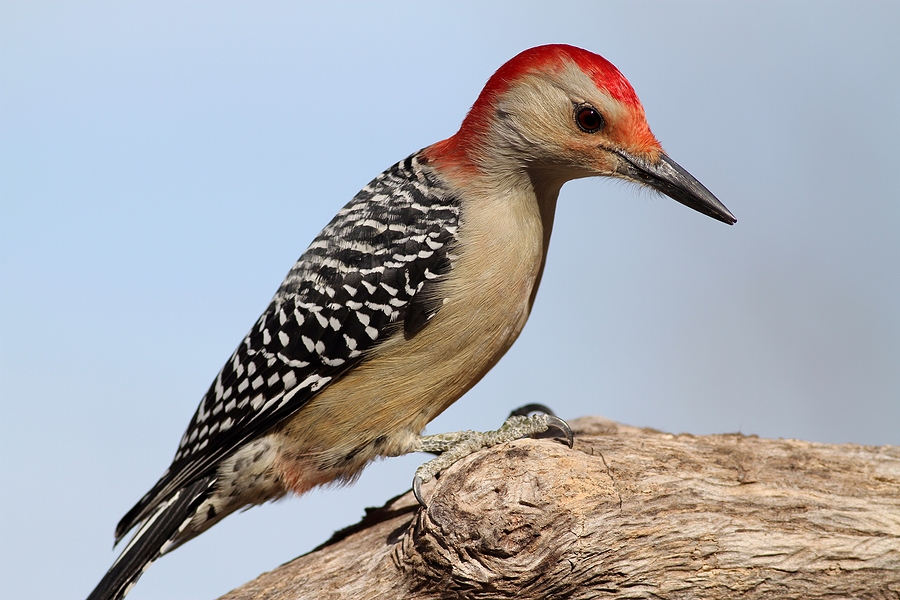For some, the rhythmic pecking of a woodpecker sounds like a tranquil part of nature’s soundtrack. For others, it’s the beginning of a slew of annoyances and potential property damage. In regions like Virginia, the presence of woodpeckers can be a common and frustrating issue, especially when these feathery drummers decide that your home or business is the perfect percussion stage.
If you’ve found yourself in the clutches of a woodpecker predicament, fear not; this blog will provide you with effective means to peacefully coexist with these beautiful birds without sacrificing your sanity or structural integrity.

Why Woodpeckers are a Nuisance
Woodpeckers are infamous for their pecking behavior, which can not only be loud and unnerving but also lead to unsightly damage to buildings and homes. They’re not doing it to be malicious – it’s an instinctual habit driven by a variety of biological and environmental factors. These avian architects aren’t just building their reputations; sometimes, they’re creating real damage, which can be costly and time-consuming to repair.
The 101 on Woodpecker Behavior
Woodpecker Species Native to Virginia
Virginia plays host to several woodpecker species, each unique in their feather patterns, behaviors, and habitats. The most frequent culprits include the downy woodpecker, the northern flicker, and the red-bellied woodpecker.
Why They ‘Peck’
Why do woodpeckers peck on buildings? The answer’s not ‘one-size-fits-all.’ For some, it’s a territorial display or a part of courtship behavior. Others may be seeking out insects living inside the wood, attracted by the sounds or the reverberations the wood makes.
The Damage They Can Do
Regardless of the reason, the impact on structures and surroundings can range from holes in siding, to weakened structural beams, and a general decrease in the aesthetic integrity of your property.
Non-Harmful Woodpecker Deterrents
Thankfully, there are myriad non-harmful ways to deter woodpeckers that won’t harm the birds or disrupt the local ecosystem. These strategies are often effective in encouraging woodpeckers to seek out new territories.
Visual Disorientation
Visual deterrents, such as reflective tape, balloons, or special scare eye balloons, can confuse and deter the most determined pecker. These are cost-effective and easily installed, offering immediate relief from woodpecker visits.
Sound Strategies
Auditory deterrents like alarms and distress calls can effectively disrupt the woodpecker’s pecking party. Modern technology even offers devices that mimic the natural predator calls that these birds fear, making your property a less inviting target.
Physical Barriers
Mesh nettings, bird spikes, and special coatings can be applied to vulnerable areas to make pecking less rewarding for the birds. While they might require more initial effort and planning, these barriers can provide long-term peace of mind.
DIY Preventive Measures
Taking control of the woodpecker situation doesn’t always mean dramatic intervention. Simple changes in your property can make a world of difference.
Adjusting Their Environment
Making your surroundings less hospitable for woodpeckers can nudge them away. This might involve clearing away dead trees or branches that could serve as drumming posts or reducing the abstraction of their reflection on windows.
Rethinking Your Landscape
Controlling the types and locations of trees and plants around your property can mitigate woodpecker interest. Thinning out trees that are near your building can reduce the amount of practice space available for these avian drumline champions.
Nip Nesting in the Bud
If a woodpecker finds a spot on your property that they deem nest-worthy, they’re not likely to forget it. Being proactive about sealing off any nooks and crannies that could become nesting areas is key in deterring them from returning.
Safe and Humane Woodpecker Removal Methods
When all else fails, and the woodpeckers are a persistent problem, it may be time to consider bird removal methods.
Professional Bird Removal and Control
Professional wildlife removal and control services are equipped with the knowledge and experience to handle woodpecker issues humanely and effectively. By understanding local laws and regulations, these services ensure that all proper steps are taken to resolve the problem without causing harm to the birds or the environment.
DIY is Not Recommended
While DIY enthusiasts and well-meaning neighbors might offer advice or services, it’s worth investing in a professional. Improper bird removal can lead to more problems, such as lingering smells, attracted vermin, or even legal repercussions if done without proper permits.
Conclusion
Dealing with woodpeckers doesn’t have to mean declaring war on nature. By employing a combination of deterrent strategies, preventive measures, and, if necessary, professional assistance, you can manage nuisance woodpecker issues in a responsible and effective manner. The key is to start early, stay informed, and act decisively.
If you find yourself in a “peck” of trouble, remember that your goal is not to eradicate these beautiful birds but to re-direct their activities away from your home. In the end, by respecting nature and employing ethical means to solve your woodpecker woes, you’ll not only protect your property but also contribute to a healthier coexistence with the wildlife around you.
Dealing with a woodpecker problem around your house or business? Contact Virginia Wildlife Pros at 804-292-0156 for professional bird removal and control in Richmond and beyond. Our licensed and insured animal trappers work with all native Virginia wildlife, using only safe and humane methods to extract and abate nuisance animals. Request a free quote, today.
Related Posts:
Feathered Foes: Practical Solutions for Nuisance Pigeons
8 Effective Strategies for Nuisance Bird Control
The Nuisance Bird Removal Methods You Need
